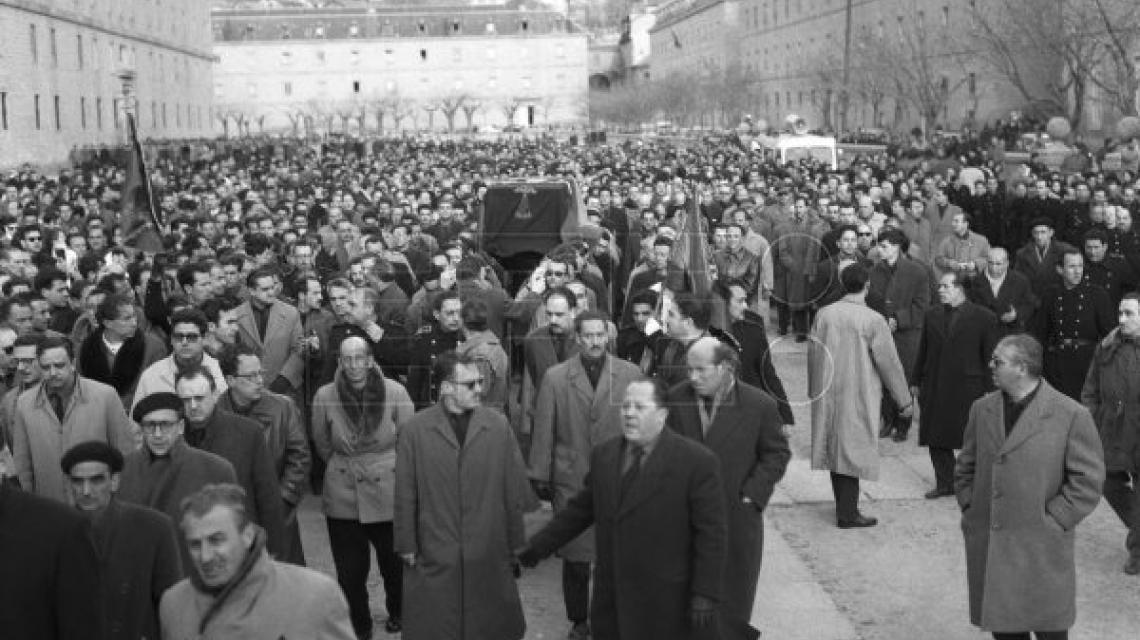
The historical figure of José Antonio Primo de Rivera acquired vital significance under Francoism, as the most senior representative of those who had “fallen for God and Spain”. The regime described him as the greatest of all martyrs. As such, he headed the lists of the fallen that were inscribed on churches and cemeteries across the country, and his name was read out at all early Francoist funeral rites.
José Antonio Primo de Rivera had founded the fascist Falange Española party in 1933, together with Rafael Sánchez Mazas. Primo de Rivera was arrested before the putsch. He was sentenced to death for conspiracy and military rebellion against the Republic and shot on 20 November 1936 in Alicante prison. The rebel faction concealed his execution for two years during which he was known as “The Absent One”.
Shortly after the end of the war, he was given one of the most spectacular and significant political funerals organized by the new dictatorship. Over a period of ten days, his body was processed on the shoulders of his Falangist coreligionists from Alicante to the El Escorial Monastery basilica, site of the Royal Pantheon, where he was interred before the main altar on 30 November, in the presence of Franco, senior State representatives and Italian and German diplomats. The cult of the fallen generated around his memory adopted 20 November, the day he was executed, as its emblematic date.
In 1959, Franco decided to transfer the symbolic, political and commemorative capital accumulated in the body of José Antonio from the Monastery of El Escorial to the Valley of the Fallen, despite opposition in some Falangist sectors. Indeed, to legitimize his decision, Franco wrote to José Antonio’s siblings, Pilar and Miguel Primo de Rivera stating that José Antonio deserved “the cherished captaincy of the fallen legion” of the crusade that was about to be installed at the new monument. He later published their letters authorizing the transfer on the cover of ABC newspaper.
Despite this endorsement, a number of incidents occurred and the Undersecretary for the Presidency, Luis Carrero Blanco – who had planned a discreet transfer in stark contrast to the spectacular procession that had brought the Falange leader from Alicante in 1939 – was jeered by some Falangists. Primo de Rivera followers broke with official protocol and used the same bier that had borne him from Alicante to El Escorial to transport him to the Valley, where he was buried before the main altar.